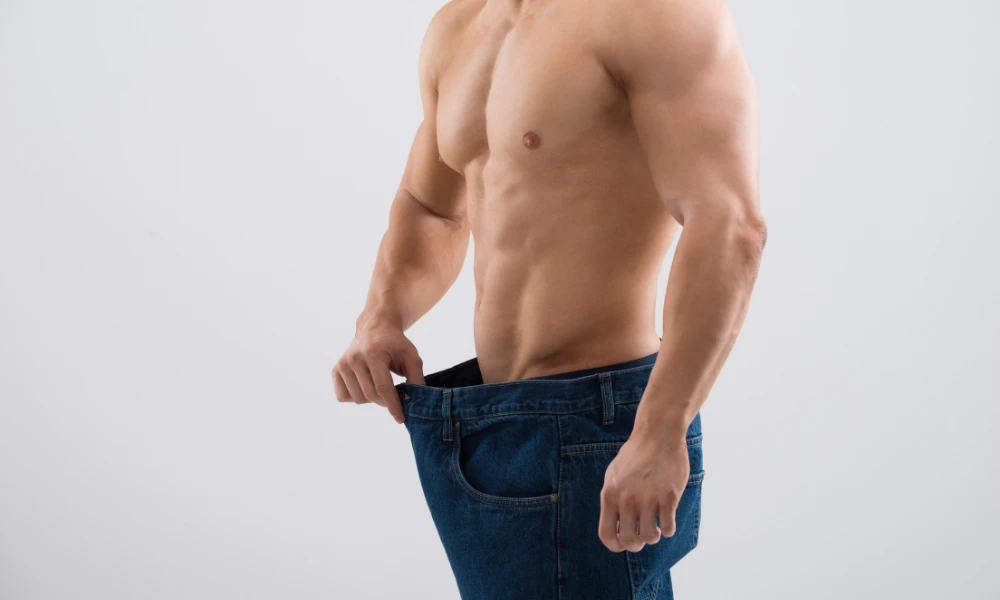If you lead a sedentary lifestyle, you may be unaware of the negative impact that physical inactivity can have on your overall health and wellness. Fortunately, incorporating non-exercise activities into your daily routine can transform your health and fitness, helping you lead an active lifestyle that promotes well-being.
Non-exercise activity is any physical activity that does not involve traditional exercise but still contributes to daily movement. NEAT or non-exercise activity thermogenesis refers to the energy we expend during these non-exercise activities. By incorporating low-intensity activities into your daily routine such as gardening, cooking, or walking, you can increase your overall activity levels and NEAT.
This article will explore the numerous benefits of non-exercise activity and NEAT, offer practical tips and strategies to incorporate more daily movement into your life, and discuss the relationship between NEAT and overall health and well-being.
Key Takeaways:
- Non-exercise activity is any physical activity that does not involve traditional exercise but still contributes to daily movement.
- Incorporating non-exercise activities such as gardening, cooking or walking as part of your daily routine can increase overall activity levels and NEAT.
- NEAT or non-exercise activity thermogenesis is the energy we expend during non-exercise activity.
- Incorporating more daily movement into your life can transform overall health and well-being.
- This article will explore the numerous benefits of non-exercise activity and NEAT.
Understanding Non-Exercise Activity and NEAT
Non-exercise activity refers to any physical movement that does not involve structured exercise or intentional physical activity but is a part of your daily routine. This includes activities such as standing, walking, gardening, household chores, or even fidgeting. Non-exercise activity thermogenesis (NEAT) accounts for the calories burned during non-exercise activities, promoting an active lifestyle.
Physical inactivity can lead to various health implications, including obesity, heart disease, and diabetes. However, incorporating movement throughout the day can help counteract the negative effects of a sedentary lifestyle. NEAT can contribute significantly to daily energy expenditure and provide numerous health benefits, including improved cardiovascular health, better weight management, and metabolic function.
By understanding non-exercise activity and the role of NEAT in promoting an active lifestyle, individuals can prioritize daily movement and make small changes to their routine that can have a significant impact on their overall health and well-being.

Benefits of Non-Exercise Activity
Are you aware of the various benefits of incorporating non-exercise activity into your daily routine? Engaging in physical activity, even at low intensity, can bring about significant improvements in your overall health and well-being.
Improved Cardiovascular Health
Implementing non-exercise activity into your daily routine positively impacts your cardiovascular health. Regular physical activity can lower blood pressure, decrease the risk of heart disease, and prevent stroke.
Boosted Metabolism
Did you know that non-exercise activity can increase your metabolic rate? This can lead to higher calorie burn and weight loss. Simple activities such as household chores or walking to the store can help boost your metabolism.
Better Weight Management
Introducing non-exercise activity into your lifestyle can help with weight management. Regular physical activity can increase your muscle mass, leading to better fat burn. It can also help reduce the risk of obesity, which is often associated with a sedentary lifestyle.
Enhanced Mood and Mental Clarity
Moving your body throughout the day can contribute to better mental and emotional health. Studies have shown that physical activity can help reduce stress, anxiety, and depression. It can also improve cognitive function and promote mental clarity.
Reduced Risk of Chronic Diseases
A sedentary lifestyle can increase the risk of chronic diseases such as diabetes, hypertension, and cancer. Incorporating non-exercise activity into your daily routine can help reduce this risk, leading to a longer, healthier life.
As you can see, incorporating non-exercise activity into your daily routine can bring about numerous benefits that impact your overall health and well-being. So why not start by taking a walk during your lunch break or incorporating household chores into your daily routine? Every little bit counts towards an active, healthy lifestyle.
Incorporating Non-Exercise Activity into Your Daily Routine
Leading an active lifestyle doesn’t necessarily require intense exercise routines. You can easily incorporate non-exercise activity into your daily routine and reap the benefits of daily movement and active living. Here are some practical tips and strategies to get started:
- Take the stairs instead of the elevator whenever possible.
- Stand up and walk around during phone calls or meetings.
- Incorporate low-intensity activities like gardening or walking into your day.
- Set reminders to stand up and move around every hour.
- Park farther away from your destination and walk the rest of the way.
Remember, small changes can make a big difference in leading an active lifestyle. Incorporating non-exercise activity into your daily routine can improve your overall health and well-being.

NEAT and Weight Management
Did you know that incorporating non-exercise activity into your daily routine can aid in weight management? This is where NEAT comes into play. NEAT, or non-exercise activity thermogenesis, refers to the energy expended during daily activities that are not considered formal exercise. By increasing NEAT, you can burn additional calories throughout the day, contributing to weight loss or weight maintenance efforts.
Physical activity is essential for weight management, but for those with sedentary lifestyles, finding the time or energy for formal exercise can be a challenge. The good news is that NEAT doesn’t require extra time or effort in your day. You can increase NEAT simply by incorporating more daily movement into your routine.
Small changes make a big difference. Try taking the stairs instead of the elevator, walking or biking to work, or engaging in low-intensity activities like gardening or cleaning. These low-intensity activities can increase NEAT and promote weight management without impacting your daily routine.
Overall, NEAT is an effective and accessible way to support weight management efforts. By incorporating more non-exercise activity into your daily routine, you can burn additional calories and improve your overall health and fitness.
NEAT and Overall Health
Incorporating non-exercise activity into your daily routine has a significant impact on your overall health. Regular physical activity can improve cardiovascular health by lowering blood pressure and cholesterol levels, reducing the risk of heart disease and stroke. Additionally, movement throughout the day can enhance cognitive function and reduce the risk of cognitive decline associated with physical inactivity.
A sedentary lifestyle is associated with an increased risk of chronic diseases such as obesity, type 2 diabetes, and certain types of cancer. Therefore, incorporating NEAT into your daily routine can help reduce this risk and improve overall health outcomes.
By adopting an active lifestyle and incorporating non-exercise activity into your daily routine, you can reap the numerous health benefits that come with consistent physical activity.
NEAT and Mental Well-being
Non-exercise activity and NEAT play a significant role in promoting mental well-being. Incorporating physical activity into your daily routine has been found to have positive effects on mood, reduce stress, and improve cognitive function. When participating in NEAT or daily movement, your body releases endorphins that help regulate emotions, creating a sense of relaxation and overall well-being.
Studies have shown that individuals with an active lifestyle have a lower risk of developing depression and anxiety, compared to those who lead a sedentary lifestyle. This highlights the importance of incorporating NEAT and physical activity into your daily routine as an effective way to promote and maintain mental health.
By embracing a more active lifestyle through simple daily habits like taking a walk or standing up and stretching every hour, you can promote mental well-being and contribute to a more positive outlook on life.
Overcoming Barriers to Non-Exercise Activity
For individuals with sedentary lifestyles, it can be challenging to incorporate non-exercise activity into their daily routine. One of the most significant barriers is time constraints. Balancing work, family, and personal life can leave little time for physical activity.
Another common barrier is low motivation levels. When you are used to a sedentary lifestyle, it can be hard to find the motivation to make necessary changes.
However, there are practical solutions to overcome these barriers. A few simple steps include taking a brisk walk during lunch breaks, parking farther away from your destination to increase steps taken, and incorporating low-intensity exercises like stretching or yoga into your routine.
Find an activity that you enjoy, whether it be dancing, swimming, or hiking. Making physical activity fun makes it easier and more enjoyable to engage in.
Finally, accountability can be a powerful motivator. Enlist the help of a friend or family member to hold you accountable for engaging in physical activity or invest in a fitness tracker to set and track daily goals.

Tracking and Monitoring Non-Exercise Activity
Tracking and monitoring your non-exercise activity is essential to maintaining an active lifestyle. Keeping a record of your daily movement can help you stay motivated and accountable, ensuring consistent engagement with physical activity.
There are various tools and methods for tracking non-exercise activity, including pedometers, activity trackers, mobile apps, and wearable devices. These devices can provide valuable insights into your daily movement patterns, helping you set goals and track progress over time.
When setting goals for non-exercise activity, it is important to be realistic and specific. Start by tracking your current daily movement and then aim to increase it gradually over time. For example, you could aim to take 10,000 steps per day or to engage in 30 minutes of low-intensity activity, such as walking or gardening, every day.
Remember that every little bit counts when it comes to non-exercise activity. Even small changes, such as taking the stairs instead of the elevator or standing up to take phone calls, can contribute to your overall daily movement.
By tracking and monitoring your non-exercise activity and setting achievable goals, you can maintain an active lifestyle and reap the many benefits of NEAT, even if you have a sedentary job or lifestyle.
Conclusion
By now, you have a solid understanding of the power of non-exercise activity and NEAT in transforming your overall health and fitness. Embracing an active lifestyle and incorporating daily movement into your routine can have a profound impact on your physical and mental well-being. Whether it’s taking the stairs instead of the elevator, going for a walk during your lunch break, or finding fun ways to incorporate low-intensity activities into your day, small changes can make a big difference. With the numerous benefits of non-exercise activity, there is no reason not to start exploring and incorporating it into your daily routine.
Remember, breaking free from a sedentary lifestyle can be challenging, but with the right mindset and approach, it is possible. Start by setting realistic goals, tracking your progress, and celebrating your successes along the way. With consistency and perseverance, you can achieve an active lifestyle and unlock the power of NEAT, leading to a healthier and happier you.




